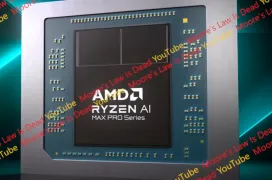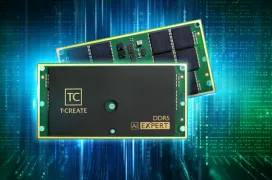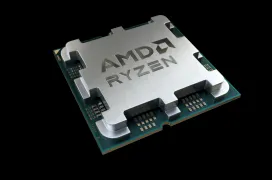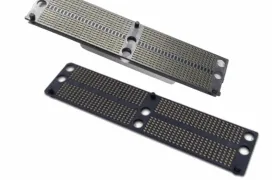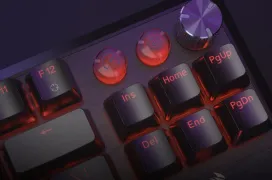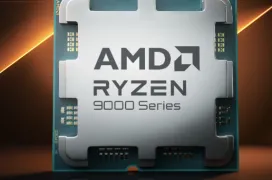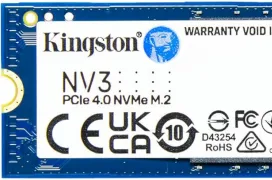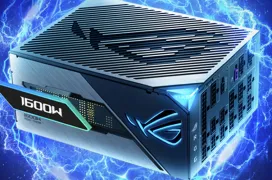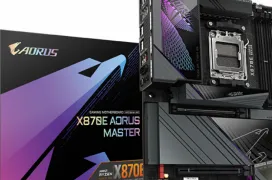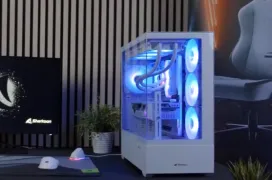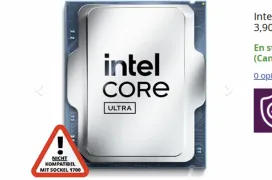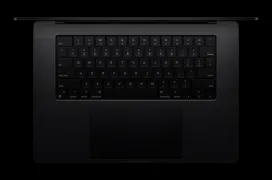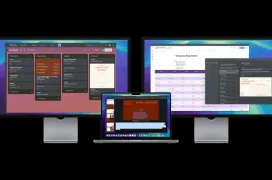Noticias de Tecnología
Noticias y novedades sobre hardware y tecnologíaDisponible Gratis esta semana en la Epic Games Store Witch It! y Ghostwire: Tokyo
Aprovechando esta víspera de Halloween, la Epic Games Store nos ha regalado nuevos juegos relacionados. Esta semana nos ofrece dos nuevos títulos que son Witch It! Y Ghostwire: Tokyo, solo tendrás que comprarlos sin...
Microsoft permitirá a los usuarios domésticos seguir con las actualizaciones de Windows 10 por 30 dólares al año
Ya falta menos de un año para que termine el soporte para uno de los sistemas operativos más populares de Microsoft, Windows 10. El gigante de Redmon dará por finalizado el soporte para este sistema operativo en octubre del...
Vista una imagen de los AMD Strix Halo que llegará con hasta 16 núcleos y 40 CUs RDNA 3.5
Este 2024 y el próximo 2025 serán años importantes para los fabricantes de procesadores, entre los que se encuentra AMD. Recientemente el fabricante ha presentado su serie de procesadores Ryzen AI 300 para portátiles,...
Apple aumenta sus ingresos del último trimestre en un 6% gracias a las buenas ventas del iPhone 16
A pesar de que los iPhone 16 ya no se pueden vender en Indonesia, el fabricante ha presentado buenos números para el último trimestre. Precisamente las buenas ventas del iPhone 16 han conseguido aumentar los ingresos de la...
Según los rumores, Apple y Samsung también están tras la compra de Intel
Hace algunas semanas escuchamos rumores de que Qualcomm quería hacerse con Intel, aunque parece que la intención se habría parado hasta conocer el resultado de las elecciones en Estados Unidos. Nuevos rumores cuentan que...
TEAMGROUP presenta los módulos CAMM2 para consumidores y de grado industrial con hasta 7.200 MT/s
Aunque la última moda en memoria DDR5 para equipos de escritorio son los módulos CUDIMM, los fabricantes también trabajan en otros modelos como los vistos en el pasado COMPUTEX CAMM2. Teamgroup ha presentado sus...
Indonesia prohíbe la venta de teléfonos iPhone 16 y Google Píxel al no contar con un 40% de contenido local
Las restricciones en teléfonos móviles han llegado a los países asiáticos, concretamente hablamos de Indonesia. Este país ha comenzado con la prohibición en la venta del nuevo teléfono de Apple, el...
El AMD Ryzen 9 9900X baja hasta los 468,89 euros
AMD anunció recientemente que los procesadores con tecnología 3D V-Cache de esta actual generación llegarían el próximo 7 de noviembre. Un procesador inicial estará disponible, el AMD Ryzen 7 9800X3D,...
AMD lanza unos drivers en versión preliminar para dar soporte a Dragon Age: The Veilguard
Los fabricantes de tarjetas gráficas se dan prisa en el lanzamiento de nuevos controladores que añadan compatibilidad con los últimos juegos del mercado, al menos con los más populares. Hemos visto como recientemente...
AMD trabaja en una alternativa con IA a la reconstrucción de rayos de NVIDIA DLSS
DLSS 3.5 de NVIDIA trajo la tecnología de reconstrucción de rayos para aumentar el rendimiento y calidad de los juegos con Raytracing. Utilizando Inteligencia Artificial, las GPUs compatibles de NVIDIA eran capaces de...
La JEDEC publica el estándar de conectores LP5CAMM2 para memorias RAM modulares de bajo consumo
La JEDEC, asociación encargada de definir los distintos estándares de memoria y almacenamiento de estado sólido, ha anunciado la publicación del nuevo conector LP5CAMM2 para memorias LPDDR5 en formato CAMM2. CAMM2...
Snapdragon 8 Elite y 24 GB de RAM en el OnePlus 13
La marca de la compañía china Oppo, OnePlus, ha anunciado su nuevo OnePlus 13, un smartphone de gama alta que, como es habitual en la compañía, incluye lo último en hardware. Y ¿Qué es lo...
Nuevo teclado Corsair K70 TKL Pro con interruptores magnéticos de efecto Hall
La gama de teclados mecánicos K70 de Corsair es una de las que más variantes tiene en su catálogo. Ahora un nuevo miembro llega para expandir aún más a la familia, el Corsair K70 PRO TKL. Este teclado...
AMD lanza el Ryzen 7 9800X3D prometiendo un 20% más de rendimiento que el Intel Core Ultra 9 285K
Finalmente se han cumplido la gran mayoría de filtraciones y rumores de las últimas semanas y el AMD Ryzen 7 9800X3D ya está aquí con sus 8 núcleos de arquitectura Zen 5 acompañados de un sistema de...
Ofertas para Hoy en Amazon: SSD M.2 Kingston de 1 TB PCIe 4 por 62,94, tarjetas gráficas, cajas para PC y más
Último día del mes para que puedas ahorrar con estas ofertas para Hoy 31 de octubre de 2024. Os traemos algunas ofertas en productos de calidad y primeras marcas que tienen un descuento en su precio. Este descuento puede ser...
Llegan a España las fuentes de alimentación ASUS ROG Thor III con pantalla OLED magnética y 1.600 W
A mediados de este mes, ASUS anunció la renovación de su línea de fuentes de alimentación ASUS ROG Thor con la tercera generación de la gama. Ahora llegan a España con el modelo de 1.600 W más...
Gigabyte ya tiene BIOS con la tecnología Turbo X3D de AMD para conseguir hasta un 18% más de rendimiento en juegos
A finales de la semana pasada, AMD lanzó una nueva versión del firmware AGESA para sus placas bases y procesadores (versión 1.2.0.2A) que incluía un modo "turbo" específico para potenciar el...
Sharkoon AK6 RGB. Nueva torre con ventanas panorámicas de cristal templado y soporte para BTF
Sharkoon ha anunciado su nueva caja Sharkoon AK6 RGB, un modelo en formato ATX que adopta la nueva moda de los paneles de cristal templado en modo "panorámico" o "pecera", es decir, con los paneles frontal y lateral...
Intel no consigue vender ni un Core Ultra 200K en una de las tiendas de hardware más importantes de Alemania
Mindfactory es una de las principales tiendas de hardware en Alemania, ya hemos hablado en más de una ocasión de ellos debido a que suelen publicar los datos detallados de ventas de todo tipo de componentes, dejando una imagen...
Nuevos MacBook Pro con procesadores M4, M4 Pro y M4 Max con Apple Intelligence y cámara de 12 MP Center Stage
Para dar vida a estos nuevos procesadores Apple M4, M4 Pro y M4 Max, el fabricante ha lanzado nuevos MacBook Pro. Unos portátiles que cuentan con los últimos procesadores y que llegan para comenzar una nueva era con Apple...
Nuevos procesadores Apple M4, M4 Pro y M4 Max con hasta 16 núcleos de CPU, 40 de GPU y con Apple Intelligence
Hace un par de días veíamos como Apple actualizaba su iMac con los nuevos procesadores M4. Hoy mismo hemos visto como esta oferta se amplió al Mac Mini, que además incluye una opción con un nuevo procesador...





